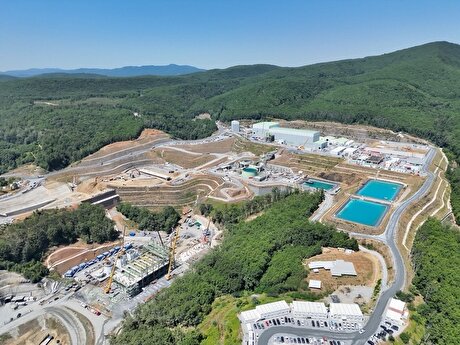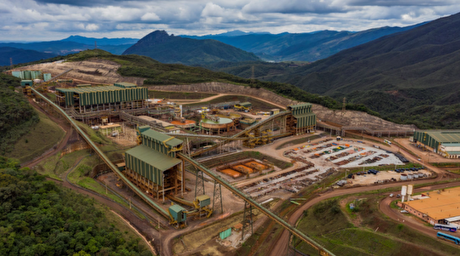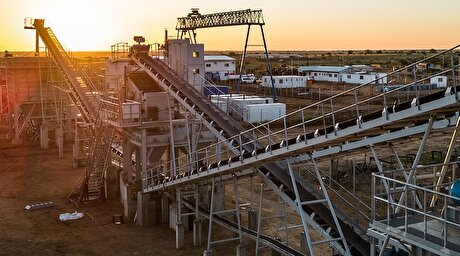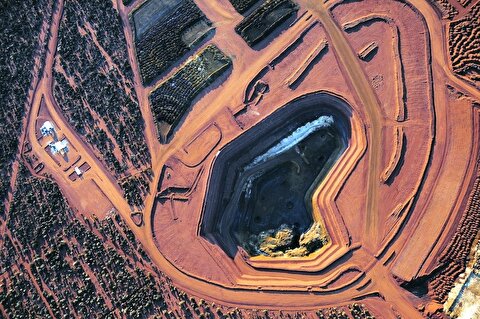
Rio Tinto, Mongolia sign power deal for Oyu Tolgoi copper mine


The Oyu Tolgoi project is central to Rio Tinto's push to diversify its portfolio away from iron ore, but it has faced a series of challenges as Mongolia's fragile government wrangles over how to maximise benefits for the country.
First production at the $5.3 billion underground expansion located near the southern border with China is scheduled for early next decade, creating one of the world's biggest copper suppliers.
The construction of a 300 megawatt plant, close to the Tavan Tolgoi coalfields, to supply electricity to the mine will start in 2020 under the new agreement.
The plant is expected to be operational by mid-2023, slightly later than the 2022 date mooted after the government cancelled an earlier power agreement in February.
The government of Mongolia owns 34 percent of Oyu Tolgoi with the remainder held by Turquoise Hill Resources, which in turn is 51 percent owned by Rio Tinto.
In a joint statement with Oyu Tolgoi, the Mongolian government said the agreement was "a significant step towards enhancing the efficiency of the Tavan Tolgoi coal mines," and to supplying the wider region with domestic power.
The statement said the partners would also consider how to incorporate the use of renewable power.
Oyu Tolgoi would be the majority owner of the power plant, with funding possibly including third party debt, the statement said, without giving further details.
Analysts welcomed the deal but said the 2023 deadline looked optimistic.
"This was the last major hurdle for the underground production," Badral Bontoi, chief executive of Mongolia-based market intelligence group Cover Mongolia, said.
A Mongolian government spokesman said the agreement was the first step to retain in the country the estimated $150 million Oyu Tolgoi currently pays China for electricity each year, with the figure set to rise when the underground extension comes online.
Rio Tinto in July entered agreements with three Chinese contractors on designing a power station to supply Oyu Tolgoi.


Newmont nets $100M payment related Akyem mine sale

First Quantum scores $1B streaming deal with Royal Gold

Caterpillar sees US tariff hit of up to $1.5 billion this year

Gold price rebounds nearly 2% on US payrolls data

Copper price collapses by 20% as US excludes refined metal from tariffs

St Augustine PFS confirms ‘world-class’ potential of Kingking project with $4.2B value

B2Gold gets Mali nod to start underground mining at Fekola

Goldman told clients to go long copper a day before price plunge

Copper price posts second weekly drop after Trump’s tariff surprise

Codelco seeks restart at Chilean copper mine after collapse

US slaps tariffs on 1-kg, 100-oz gold bars: Financial Times

BHP, Vale offer $1.4 billion settlement in UK lawsuit over Brazil dam disaster, FT reports

NextSource soars on Mitsubishi Chemical offtake deal

Copper price slips as unwinding of tariff trade boosts LME stockpiles

SAIL Bhilai Steel relies on Danieli proprietary technology to expand plate mill portfolio to higher steel grades

Alba Discloses its Financial Results for the Second Quarter and H1 of 2025

Australia weighs price floor for critical minerals, boosting rare earth miners

Australia pledges $87M to rescue Trafigura’s Nyrstar smelters in critical minerals push

Fresnillo lifts gold forecast on strong first-half surge

US slaps tariffs on 1-kg, 100-oz gold bars: Financial Times

BHP, Vale offer $1.4 billion settlement in UK lawsuit over Brazil dam disaster, FT reports

NextSource soars on Mitsubishi Chemical offtake deal

Copper price slips as unwinding of tariff trade boosts LME stockpiles

SAIL Bhilai Steel relies on Danieli proprietary technology to expand plate mill portfolio to higher steel grades

Alba Discloses its Financial Results for the Second Quarter and H1 of 2025

Australia weighs price floor for critical minerals, boosting rare earth miners

Australia pledges $87M to rescue Trafigura’s Nyrstar smelters in critical minerals push

Fresnillo lifts gold forecast on strong first-half surge














